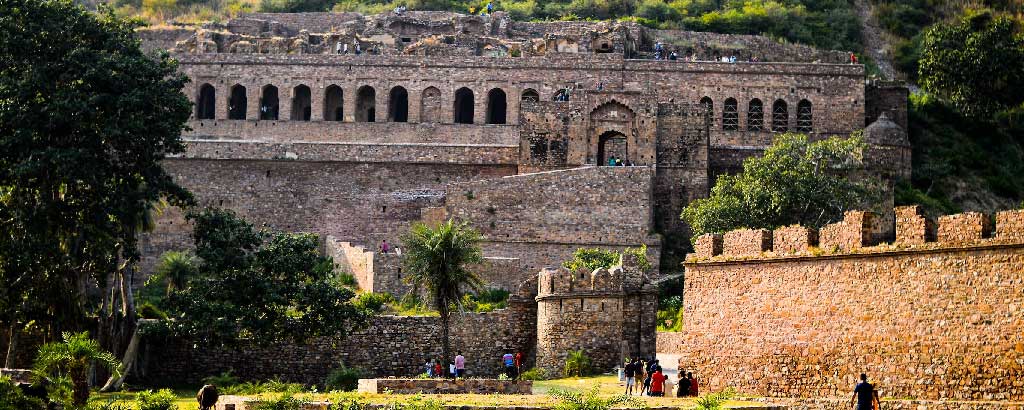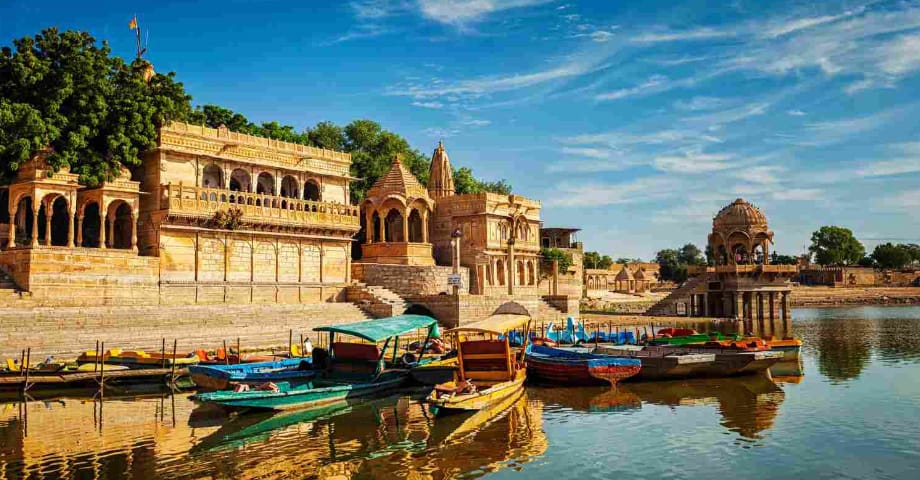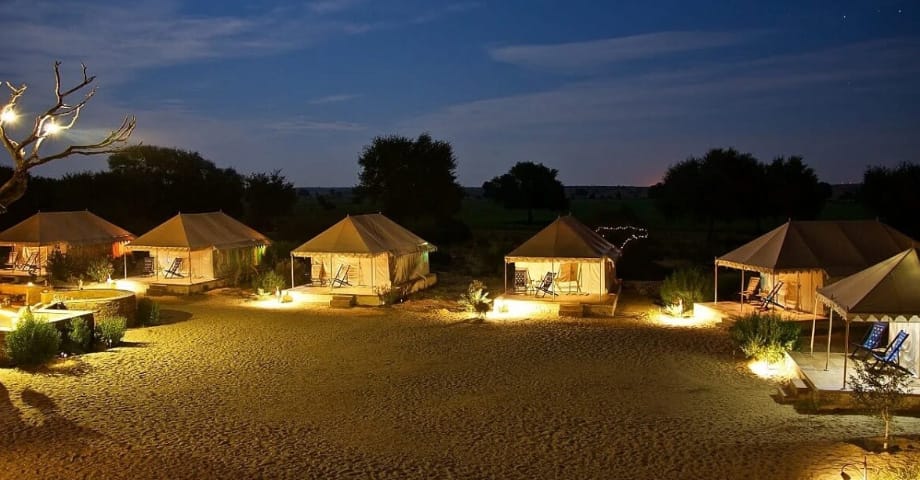- Have Any Question ?
- +91-9929358785
- 01414054824
- Info@thepinkcityholidays.com
Bhangarh Fort Alwar

Hidden Places to Visit in Jaisalmer
November 28, 2023
Exploring Rajasthan in Style: Traveling with a Hired Tempo
December 25, 2023Settled in the Aravalli Range in the Alwar District of Rajasthan, Bhangarh Fort is an enigmatic testimony to history and folklore. Renowned as one of India's most haunted places, the ancient fort draws thrill-seekers, historians, and paranormal enthusiasts alike. As travelers approach the imposing ruins, they are greeted by an air of suspense and the echoes of ancient legends that shroud this enigmatic fortress.
This article'll delve deep into the rich history, legends, and mysterious aura that shrouds Bhangarh Fort Tour.
Historical Roots –
Built-in the 17th century by Bhagwant Das, a ruler of Amber, Bhangarh Fort is a complex of temples, palaces, and gates. Its architectural splendor once reflected the grandeur of a bygone era. However, the fort's prosperity was short-lived, succumbing to events that eventually led to its abandonment.
Architectural splendor –
Sprawling across a huge acre of rugged terrain, Bhangarh Fort showcases a remarkable blend of Hindu and Mughal styles of architecture. The fort complex encompasses temples, palaces, and gateways that glimpse the regal lifestyle of the bygone era. The ornate carvings, intricate latticework, and well-planned courtyards attest to the grandeur that once graced its ancient walls.
The Curse of Bhangarh Fort –
However, Bhangarh Fort is known for its magnificent architecture; its grounds are believed to be cursed. Local legends say that a magician named Singhiya fell in love with Ratnavati, the lovely princess of Bhangarh. Realizing that traditional methods would never win her love, Singhiya resorted to black magic.
Ratnavati, familiar with the wizard's plans, exposed his duplicity and turned the magical potion back on him. Singhiya aggressively cursed Bhangarh, predicting its destruction, until the spell finally killed him. The fort suffered from several conflicts and natural disasters, ultimately leading to its downfall.
The Haunting Tales –
Bhangarh Fort's eerie reputation has drawn thrill-seekers and paranormal lovers. The fort is the subject of many spooky stories, with inhabitants reporting unexplained events, disembodied voices, and ghostly apparitions. Even at the fort's entrance, the Archaeological Survey of India (ASI) has placed a board cautioning against entering after sunset and before daybreak.
The most known mythology concerns the ascetic Guru Balu Nath, formerly a resident of the area. He permitted before Bhangarh Fort could be built, but only on the understanding that the fort's shadow would not fall on his residence.
Visiting Bhangarh –
The entry gate to this historic landmark is marked by an imposing stone gate, which greets travelers to Bhangarh Fort. The fort's overgrown flora and decaying buildings create an atmospheric backdrop against which to discover the mysteries within its walls.
The most notable attractions of the fort complex are the Royal Palace, Someshwar Temple, and Gopinath Temple. The elaborately carved and sculptured temples are a reminder of the greatness of ancient architecture. The palace provides expansive views of the surroundings from its several stories and balconies.
Preventions for a visit:
Considering the fort's reputation for being haunted, these are a few major guidelines and safety measures. According to the ASI warning board at the entrance, it is highly recommended to enter the fort premises after nightfall or before sunrise. Respecting Bhangarh's historical and spiritual value is essential, even though the place draws curious tourists.
By visiting Bhangarh Fort during the day, travelers may take in its stunning architecture and solve its historical puzzles without being drawn in by the fort's spooky ambiance after sunset. Photographers can document the fort's rich history through photographs that capture the interplay of light and shadow on the historic architecture.
Wrapping up –
The adventurous traveler is still drawn to Bhangarh Fort because of its alluring fusion of history, architecture, and mythology. Jaipur to Bhangarh Tour is a way to the enduring appeal of historical riddles, regardless of whether one is drawn to it because of its eerie reputation or wants to learn more about Rajasthan's rich past. Visitors become involved in a centuries-long story that reveals the mysteries of a bygone era as they walk through its historic hallways and investigate its reverberating rooms.








